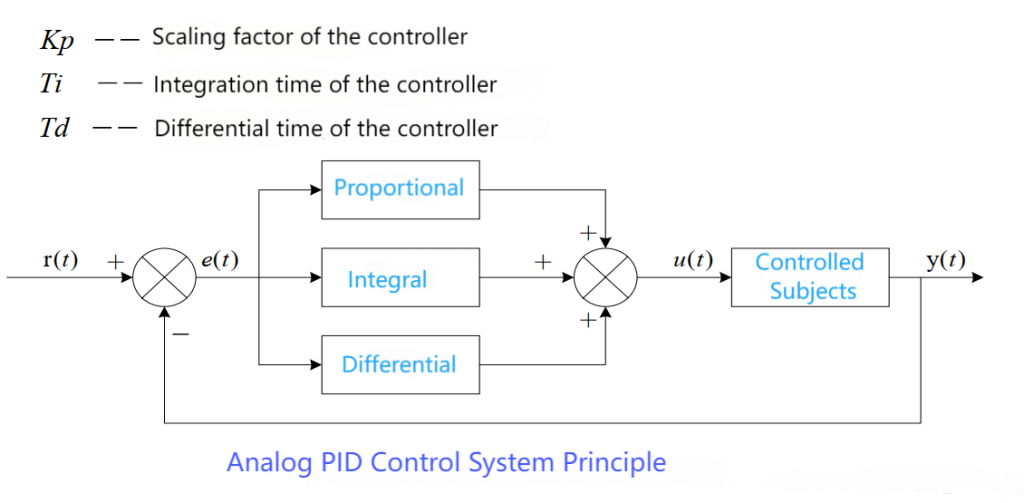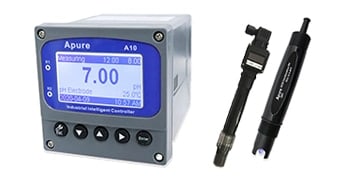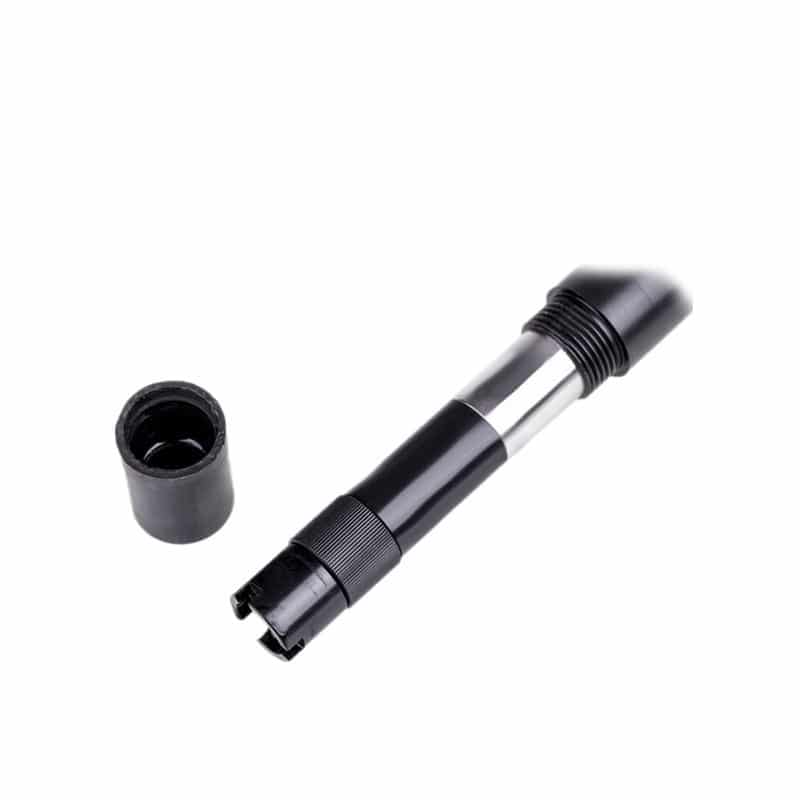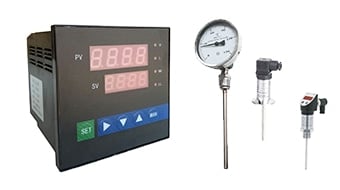In modern water treatment systems, automatic control technology is key in ensuring stable water quality and efficient treatment processes.PID (Proportional-Integral-Derivative) controllers are one of the most commonly used control algorithms, and due to their simplicity and high efficiency, they are widely used in industrial control applications, especially in water treatment systems. Whether regulating pH, controlling flow and pressure, or managing temperature, PID controllers provide precise and stable control to ensure that the system operates at its optimum.
What is PID?
A PID controller is a control algorithm widely used in industrial control systems to regulate and control process variables to keep them near a set target value. PID stands for Proportional, Integral, and Derivative, which correspond to the three components of the control algorithm. By combining these three components, the PID controller can accurately regulate the process variable to achieve fast response, minimal steady-state error, and good stability.
Working principle of PID controller
A PID controller calculates the error between a process variable (e.g. temperature, pressure, flow rate, etc.) and a set value and regulates the control signal based on mathematical operations of proportionality, integration, and differentiation. The control signals are used to drive actuators (e.g. valves, motors, etc.) to bring the process variable to the setpoint.
- Proportional (P) control: the control output is proportional to the current error. The proportional gain (Kp) determines the speed and magnitude of the controller’s response to the error. Proportional control can respond quickly to errors, but cannot completely eliminate steady-state errors.
- Integral (I) control: The control output is proportional to the accumulation of error. The integral gain (Ki) removes the steady state error through the accumulated error and brings the system to the setpoint. Integral control increases the accuracy of the system but may result in a slower response.
- Differential (D) control: the control output is proportional to the rate of change of the error. The differential gain (Kd) predicts the trend of the error and can improve the response and stability of the system, reducing overshoots and oscillations.


Advantages of PID controllers
- Simplicity: PID controllers are simple in structure and easy to implement and adjust.
- Wide applicability: Applicable to a variety of industrial control processes, including temperature, pressure, flow and position control.
- Efficient: Fast response, minimal overshoot, and stable control can be achieved through proper adjustment of PID parameters.
Regulation and optimization of PID control systems
Manual adjustment: Manually adjust the PID parameters (Kp, Ki, Kd) through experimentation and observation of the system response until the system achieves satisfactory performance.
Auto-tuning: Use auto-tuning algorithms (e.g. Ziegler-Nichols method) or professional tuning software to quickly find the right PID parameters.
PID control application example
PID controllers play a vital role in water quality monitoring instruments and apparatus, mainly used to ensure the stability and precise control of water quality parameters. The following are specific applications and roles of PID controllers in water quality monitoring:
1. Automatic pH adjustment
Application scenario
In the water treatment process, the stability of pH value is very important for water quality. too high or too low pH value may affect the water treatment effect, and even negatively affect aquatic organisms and human heal
Role of the PID controller
- Proportional control (P): Responds quickly to changes in pH and adjusts the dosage of acid and alkali additives according to the current error.
- Integral control (I): Accumulates the error, eliminates long-term pH deviation, and ensures that the pH value is maintained within the set range.
- Differential control (D): Predicts pH trends to minimize fluctuations and prevent over-adjustment.

2. Dissolved oxygen control
Application scenario
Dissolved oxygen level is an important factor affecting water quality, especially in water treatment and aquaculture, the stabilization of DO value is crucial.
Role of PID controller
- Proportional control (P): Adjusts the operating status of the aeration equipment according to the current DO concentration deviation.
- Integral control (I): Eliminates long-term DO deviation and ensures stable oxygen levels.
- Differential control (D): Predicts dissolved oxygen trends, reduces fluctuations, and prevents over-adjustment of the system.

3. Temperature control
Application scenarios:
The stability of water temperature is important for chemical reactions and biological processes in certain water quality monitoring and treatment processes.
Role of the PID controller:
- Proportional control (P): Quickly responds to temperature changes by adjusting the power of the heating or cooling equipment based on current temperature deviations.
- Integral control (I): Eliminates long-term temperature deviations and ensures that the water temperature stabilizes within the set range.
- Differential control (D): Predicts temperature trends, reduces system temperature fluctuations and improves control accuracy.

4. Flow control
Application scenario:
In water treatment and distribution systems, precise control of flow rate is critical to ensure proper system operation and stable water quality.
Role of the PID controller:
- Proportional control (P): adjusts the pump speed or valve opening according to the current flow deviation.
- Integral control (I): eliminates long-term deviation of flow rate and ensures stable flow rate.
- Differential control (D): Predicts flow trends, reduces fluctuations, and prevents over-adjustment.
5. Chemical dosing control
Application scenario:
In the water treatment process, the dosage of chemicals (e.g. chlorine, coagulants, etc.) needs to be precisely controlled to ensure the treatment effect and water quality safety of the chemical dosing system.
Role of PID controller:
- Proportional control (P): Adjusts the dosage according to the current chemical concentration deviation.
- Integral control (I): Eliminates long-term deviation and ensures that the concentration of chemicals is stabilized within the target range.
- Differential control (D): Predicts concentration trends, reduces fluctuations and improves control accuracy.
6. Data acquisition and remote monitoring
Application scenario:
In modern water quality monitoring systems, real-time data acquisition and remote monitoring are very important to detect and solve problems in time.
Role of PID controller:
- Real-time control and feedback: The PID controller can collect real-time water quality data and make instant adjustments according to the preset parameters.
- Data recording and analysis: By integrating with the data acquisition system, the PID controller can record and analyze the historical data to provide the basis for optimizing the control strategy.
- Remote monitoring and alarm: PID controller can be connected with remote monitoring system to realize real-time monitoring and alarm function of water quality parameters to ensure the safe and stable operation of the system.
PID controllers play a key role in water quality monitoring meters and instruments, ensuring the stability and efficiency of the water treatment process by precisely controlling water quality parameters such as pH, dissolved oxygen, temperature, and flow rate. They not only improve the responsiveness and control accuracy of water treatment systems but also greatly reduce the need for manual intervention to ensure safe and reliable water quality. Whether in industrial water treatment, drinking water supply, or swimming pool management, PID controllers are an important tool for efficient, intelligent, and stable control.
Summary
PID control system has a wide range of applications in industrial automation and process control, through reasonable adjustment and optimization of PID parameters, can achieve efficient, stable and accurate process control. Understanding and mastering the basic principles and applications of PID control systems is an essential skill for engineers and technicians. Through continuous practice and optimization, the performance and reliability of the control system can be further improved.
With a relentless pursuit of excellence and as a trusted brand with cutting-edge technology, superb craftsmanship and unwavering dedication to customer satisfaction. Apure offers different instruments for monitoring water quality products, ozone generators for purification and disinfection, for more detailed information about our products and services, please visit our official website.
